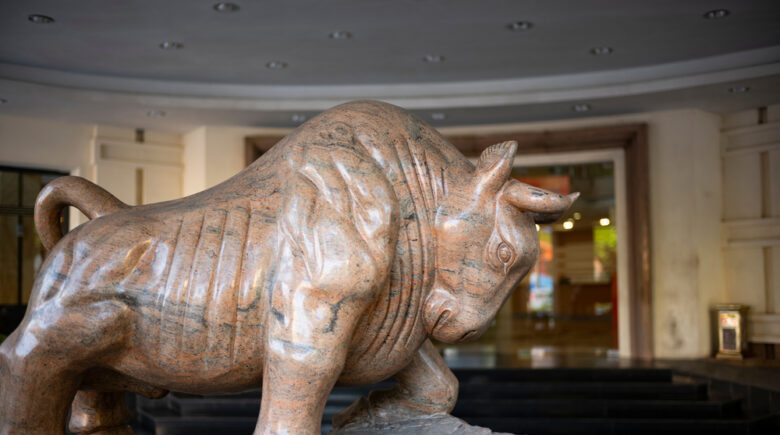Alternative assets are non-traditional investments not typically traded on public stock exchanges. These include real estate, commodities, cryptocurrencies, art, collectibles, private equity, and hedge funds.
Diversification beyond stocks and bonds is essential because these traditional investments are subject to market volatility and can experience significant losses during market downturns. Investing in alternative assets can provide diversification benefits and potentially higher returns, making it a valuable strategy for managing risk and improving portfolio performance.
A PwC report shows that institutionally adopted alternative assets stood at about $18 trillion under management as of the end of 2020, or 12% of the $153 trillion market. Additionally, a Preqin report projects growth of alternative investment will reach $14 trillion by 2023.
Types of Alternative Assets
Non-traditional investments, known as alternative assets, provide diversification advantages beyond stocks and bonds. Here are a few examples of such assets:
A. Real Estate
Real estate involves investing in commercial or residential properties, REITs, or crowdfunding platforms. According to the Statista Research Department’s report published on August 15, 2022, by 2030, it projects the global real estate market reaching $14.6 billion.
B. Commodities
Commodities refer to investing in physical assets like gold, silver, oil, or agricultural products to offset inflation and currency fluctuations. As per the World Bank, the total value of the commodities market stands at $20.2 trillion.
C. Cryptocurrencies
Cryptocurrencies are digital assets that have gained popularity as an alternative to traditional currencies due to their decentralization and potential for high returns. The market capitalization of cryptocurrencies reached $1.5 trillion in early 2021, as per CoinMarketCap.
D. Art
Art investments in fine art, collectible pieces, or art funds offer diversification and potential for capital gains. The global art market increased from 441.02 billion in 2022 to 579.52 billion dollars in 2023.
E. Collectibles
Collectibles like rare stamps, coins, wine, or vintage cars provide potential returns. According to Knight Frank’s Luxury Investment Index, classic cars have delivered an average annual return of 13.6% over the past decade.
F. Private Equity
Private equity investments in private companies or funds provide higher returns than public markets but entail higher risk and illiquidity. According to Preqin, the private equity market has experienced significant growth over the past decade, tripling from almost US$2 trillion in 2010 to exceeding US$6 trillion in November 2021.
G. Hedge Funds
Hedge funds are private investment vehicles that use sophisticated strategies to generate returns in both up and down markets. According to Hedge Fund Research, the entire hedge fund industry AUM reached $3.6 trillion in 2020.
Investors can mitigate risk and potentially enhance returns by diversifying their portfolios with alternative assets. However, thoroughly researching and assessing the risks and advantages of each alternative asset class is crucial before investing.
Advantages and Disadvantages of Alternative Assets
Investors can gain diversification benefits and higher returns through alternative assets, but they have pros and cons. Here are some crucial factors to keep in mind:
Advantages
Potential for higher returns:
Alternative assets can access niche markets with higher returns than traditional investments. The private equity industry’s average net internal rate of return (IRR) typically falls from 20% to 25%. In line with the gross IRR targets of private equity investors, this equates to a gross IRR range of approximately 25% to 30%.
Diversification benefits:
Alternative assets provide exposure to different asset classes, such as real estate, commodities, or cryptocurrencies, which can offer diversification benefits. According to a Vanguard study, a portfolio with alternative investments had a lower volatility and better risk-adjusted returns than a traditional 60/40 stock and bond portfolio.
Inflation hedge:
Real estate or commodities, for instance, can act as an inflation hedge and protect against fluctuations in currency value, maintaining one’s purchasing power.
Disadvantages
Liquidity concerns:
Illiquidity can be an issue for alternative investments, like private equity or real estate, making it challenging to sell quickly and limiting investors’ ability to access their funds when needed.
Lack of regulation:
Alternative assets are often subject to less law than traditional investments, increasing the risk of fraud and mismanagement. For example, hacking attacks or insider trading scandals have led to significant investor losses on cryptocurrency exchanges.
High fees:
Due to their specialized nature and management costs, alternative assets generally incur higher fees than traditional investments. Hedge funds can charge a 2% management fee and a 20% performance fee, much higher than index fund fees.
By comprehending the pros and cons of alternative assets, investors can make informed decisions about diversifying their portfolios beyond stocks and bonds. Comprehensive research and consulting with a professional are critical steps before investing in alternative assets to ensure they are compatible with an investor’s risk tolerance and objectives.
How to Invest in Alternative Assets
Investing in alternative assets is an effective way to diversify a portfolio and increase returns. Here are some steps investors can follow when considering alternative investments:
A. Determine your risk tolerance
Before investing in any asset, it’s essential to determine your risk tolerance. Alternative assets can have higher risks than traditional investments, so it’s crucial to understand your willingness and ability to take on risk.
B. Conduct thorough research
Alternative assets can be complex and require specialized knowledge. Before investing, conducting thorough research and understanding the risks and potential returns is essential. Investors should consider historical performance, market trends, and management fees.
C. Consider working with a financial advisor
Investors who require more time, expertise, or assistance with their research may find it beneficial to work with a financial advisor. A financial advisor can guide alternative asset investments, helping investors ensure they align with their goals and risk tolerance.
D. Allocate a portion of your portfolio
Investing in alternative assets is essential to avoid over-committing to any asset class. Typically, investors should allocate at least 10–15 percent of their portfolios toward alternative investments, with the exact percentage depending on the investor’s goals and risk tolerance.
According to a survey by Natixis Investment Managers, investors who allocated more than 25% of their portfolio to alternative assets were more likely to outperform traditional investments. However, it’s crucial to remember that alternative assets can be volatile and may not be suitable for all investors.
By following these steps and conducting thorough research, investors can diversify their portfolios beyond stocks and bonds and potentially increase their returns. However, it’s essential to remember that alternative assets come with risks and require a cautious approach.
Conclusion
Investing in other assets, such as real estate, commodities, cryptocurrencies, art, collectibles, private equity, and hedge funds, can offer diversification benefits and potentially higher returns, reducing overall portfolio risk for investors. However, alternative assets also carry risks like liquidity concerns, a lack of regulation, and high fees. Thorough research, understanding risk tolerance, and working with a financial advisor are crucial before investing.
While alternative assets can enhance a well-diversified portfolio, cautious and informed decision-making is essential to ensure alignment with an investor’s goals. A diligent assessment of each investment opportunity and adherence to the guidelines outlined in this article can boost long-term returns.



